#hindu art history
Explore tagged Tumblr posts
Photo
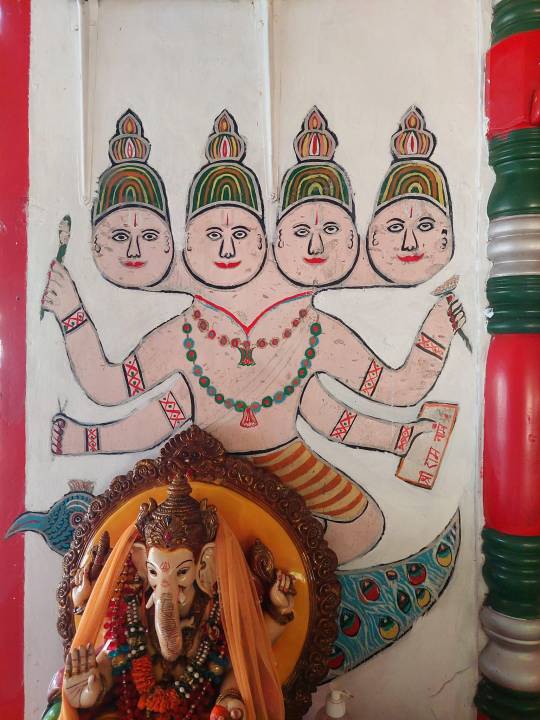
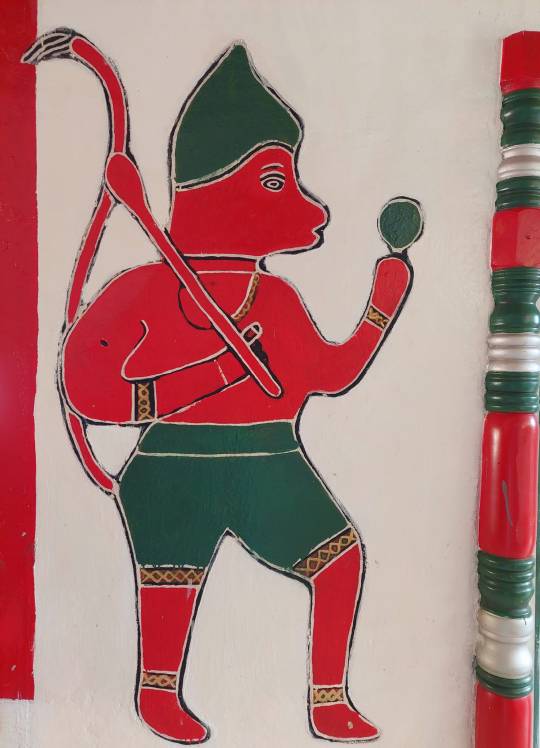
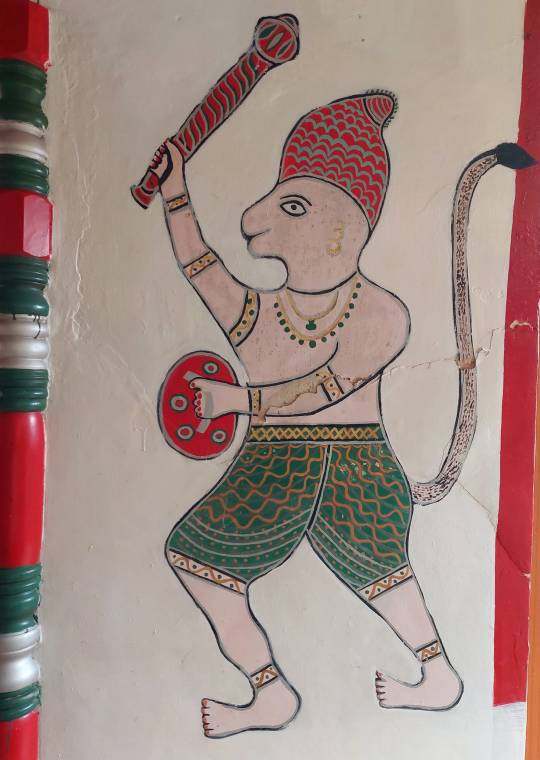

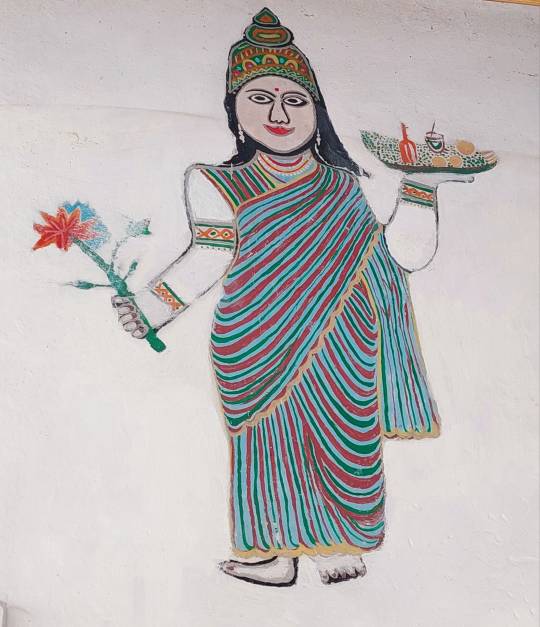

Sexypink - From the Facebook page of Niala DB
On this Indian Arrival Day (May 30th 2023), I present you with original artwork- temple murals - from the Indentured ancestors which have been preserved on the walls of the Moose Bhagat Hindu Temple, George Village Tableland. This religious and once tribally-important building was constructed by Pundit Mahandat Moose Bhagat Dass in 1904 and is preserved by his descendants, although it seems the pundit line is no more. This temple is written as being the second oldest in the Caribbean ( I do not have the facts to confirm this).
I don't share DNA with this possible ancestor-in law, but I thought the journey worthwhile. I feel I see a Bhagat clan resemblance in the faded photo of Moose but, that might just be wishful thinking. It was a joy to behold the art of the ancient Indentured from India. I wonder how old were the artists?
May they all continue to sleep in peace, giants they once were.
#sexypink/Indian Arrival Day 2023#sexypink/Indian murals in Trinidad#sexypink/Moose Bhagat Hindu Temple#sexypink/Indian Caribbean Art#tumblr/Indian Arrival Day#tumblr/Hindu Temple Art#hindu temple art#Trinidad and Tobago#Moose Bhagat Hindu Temple#tumblr/Moose Bhagat Hindu Temple#hindu history#hindu art history
3 notes
·
View notes
Text
In addition to my Monkey Man post from earlier, the always kind & sweet Aparna Verma (author of The Phoenix King, check it out) asked that I do a thread on Hijras, & more of the history around them, South Asia, mythology (because that's my thing), & the positive inclusion of them in Monkey Man which I brought up in my gushing review.
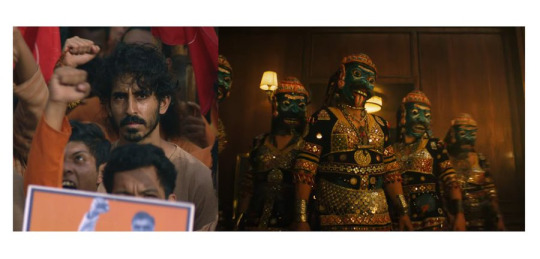
Hijra: They are the transgender, eunuch, or intersex people in India who are officially recognized as the third sex throughout most countries in the Indian subcontinent. The trans community and history in India goes back a long way as being documented and officially recognized - far back as 12th century under the Delhi Sultanate in government records, and further back in our stories in Hinduism. The word itself is a Hindi word that's been roughly translated into English as "eunuch" commonly but it's not exactly accurate.
Hijras have been considered the third sex back in our ancient stories, and by 2014 got official recognition to identify as the third gender (neither male or female) legally. Pakistan, Nepal, Bangladesh, and India have accepted: eunuch, trans, intersex people & granted them the proper identification options on passports and other government official documents.
But let's get into some of the history surrounding the Hijra community (which for the longest time has been nomadic, and a part of India's long, rich, and sometimes, sadly, troubled history of nomadic tribes/people who have suffered a lot over the ages. Hijras and intersex people are mentioned as far back as in the Kama Sutra, as well as in the early writings of Manu Smriti in the 1st century CE (Common Era), specifically said that a third sex can exist if possessing equal male and female seed.
This concept of balancing male/female energies, seed, and halves is seen in two places in South Asian mythos/culture and connected to the Hijra history.
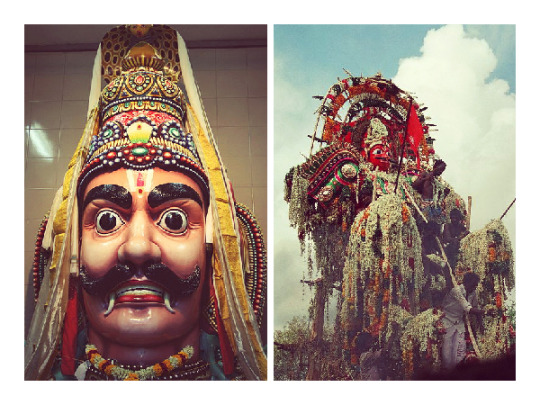
First, we have Aravan/Iravan (romanized) - who is also the patron deity of the transgender community. He is most commonly seen as a minor/village deity and is depicted in the Indian epic Mahabharata. Aravan is portrayed as having a heroic in the story and his self-sacrifice to the goddess Kali earns him a boon.
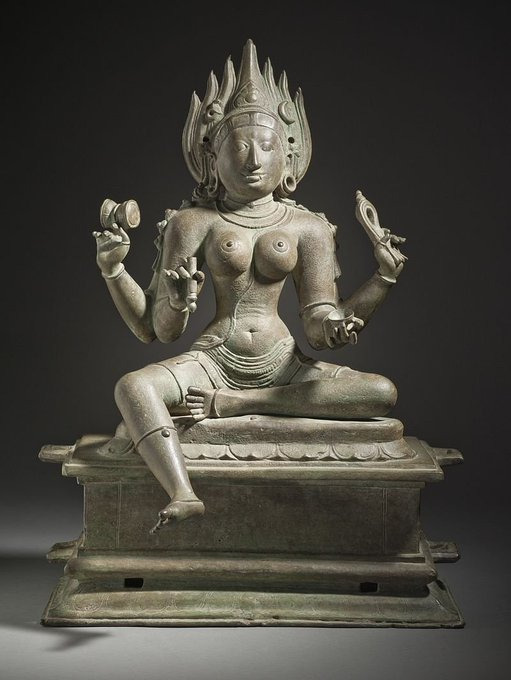
He requests to be married before his death. But because he is doomed to die so shortly after marriage, no one wants to marry him.
No one except Krishna, who adopts his female form Mohini (one of the legendary temptresses in mythology I've written about before) and marries him. It is through this union of male, and male presenting as female in the female form of Mohini that the seed of the Hijras is said to begun, and why the transgender community often worships Aravan and, another name for the community is Aravani - of/from Aravan.
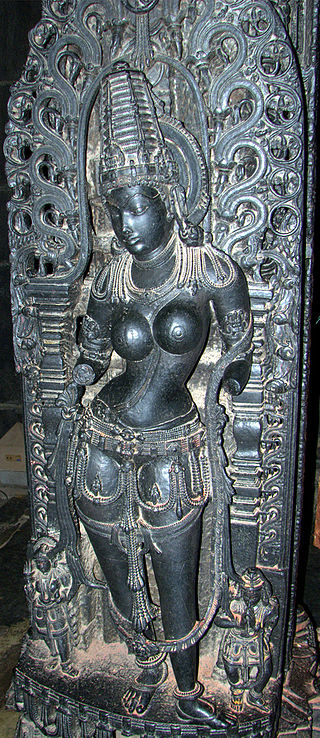
But that's not the only place where a gender non conforming divine representation can be seen. Ardhanarishvara is the half female form of lord Shiva, the destroyer god.
Shiva combines with his consort Parvarti and creates a form that represents the balancing/union between male/female energies and physically as a perfectly split down the middle half-male half-female being. This duality in nature has long been part of South Asian culture, spiritual and philosophical beliefs, and it must be noted the sexuality/gender has often been displayed as fluid in South Asian epics and the stories. It's nothing new.

Many celestial or cosmic level beings have expressed this, and defied modern western limiting beliefs on the ideas of these themes/possibilities/forms of existence.
Ardhanarishvara signifies "totality that lies beyond duality", "bi-unity of male and female in God" and "the bisexuality and therefore the non-duality" of the Supreme Being.
Back to the Hijra community.
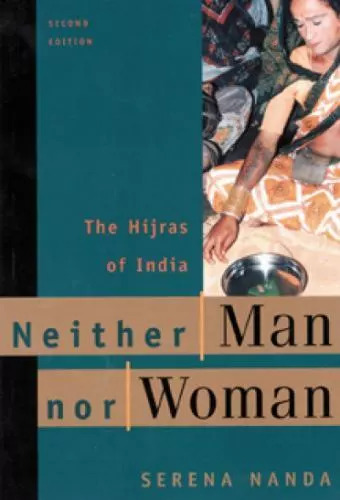
They have a complex and long history. Throughout time, and as commented on in the movie, Monkey Man, the Hijra community has faced ostracization, but also been incorporated into mainstream society there. During the time of the Dehli Sultanate and then later the Mughal Empire, Hijras actually served in the military and as military commanders in some records, they were also servants for wealthy households, manual laborers, political guardians, and it was seen as wise to put women under the protection of Hijras -- they often specifically served as the bodyguards and overseers of harems. A princess might be appointed a Hijra warrior to guard her.

But by the time of British colonialism, anti-Hijra laws began to come in place folded into laws against the many nomadic tribes of India (also shown in part in Monkey Man with Kid (portrayed by Dev Patel) and his family, who are possibly
one of those nomadic tribes that participated in early theater - sadly by caste often treated horribly and relegated to only the performing arts to make money (this is a guess based on the village play they were performing as no other details were given about his family).
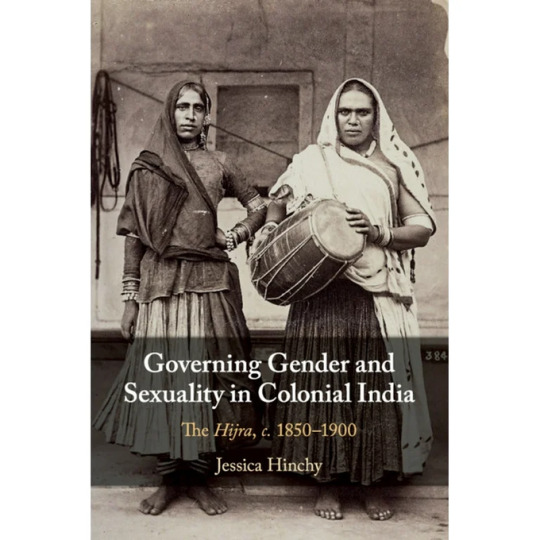
Hijras were criminalized in 1861 by the Indian Penal Code enforced by the British and were labeled specifically as "The Hijra Problem" -- leading to an anti-Hijra campaign across the subcontinent with following laws being enacted: punishing the practices of the Hijra community, and outlawing castration (something many Hijra did to themselves). Though, it should be noted many of the laws were rarely enforced by local Indian officials/officers. But, the British made a point to further the laws against them by later adding the Criminal Tribes Act in 1871, which targeted the Hijra community along with the other nomadic Indian tribes - it subjected them to registration, tracking/monitoring, stripping them of children, and their ability to sequester themselves in their nomadic lifestyle away from the British Colonial Rule.
Today, things have changed and Hijras are being seen once again in a more positive light (though not always and this is something Monkey Man balances by what's happened to the community in a few scenes, and the heroic return/scene with Dev and his warriors). All-hijra communities exist and sort of mirror the western concept of "found families" where they are safe haven/welcoming place trans folks and those identifying as intersex.
These communities also have their own secret language known as Hijra Farsi, which is loosely based on Hindi, but consists of a unique vocabulary of at least 1,000 words.
As noted above, in 2014, the trans community received more legal rights.
Specifically: In April 2014, Justice K. S. Radhakrishnan declared transgender to be the third gender in Indian law in National Legal Services Authority v. Union of India.
Hijras, Eunuchs, apart from binary gender, be treated as "third gender" for the purpose of safeguarding their rights under Part III of our Constitution and the laws made by the Parliament and the State Legislature. Transgender persons' right to decide their self-identified gender is also upheld and the Centre and State Governments are directed to grant legal recognition of their gender identity such as male, female or as third gender.
I've included some screenshots of (some, not all, and certainly not the only/definitive reads) books people can check out about SOME of the history. Not all again. This goes back ages and even our celestial beings/creatures have/do display gender non conforming ways.
There are also films that touch on Hijra history and life. But in regards to Monkey Man, which is what started this thread particularly and being asked to comment - it is a film that positively portrayed India's third sex and normalized it in its depiction. Kid the protagonist encounters a found family of Hijras at one point in the story (no spoilers for plot) and his interactions/acceptance, living with them is just normal. There's no explaining, justifying, anything to/for the audience. It simply is. And, it's a beautiful arc of the story of Kid finding himself in their care/company.
#hijra#trans representation#monkey man#dev patel#transgender#trans rights#trans rights are human rights#third sex#indian history#indian culture#colonialism#imperialism#south Asian mythos#South Asian myths#Aravan#Iravan#Mahabharata#hindu mythology#hindu gods#kali goddess#krishna#hindu mythology art#Ardhanarishvara#Shiva#Parvarti#sexuality#gender fluid#fluid sexuality#trans community#transgender rights
808 notes
·
View notes
Text

Arguably the most important person in the epic, and the Mahabharata’s main character
#illustration#art#artwork#digital art#mythology#character art#character design#ancient world#ancient history#ancient india#mahabharata#mahabharat#hinduism#hindublr#hindu mythology#desi tumblr#desi tag#desiblr#the pandava quintet#arjuna
56 notes
·
View notes
Text
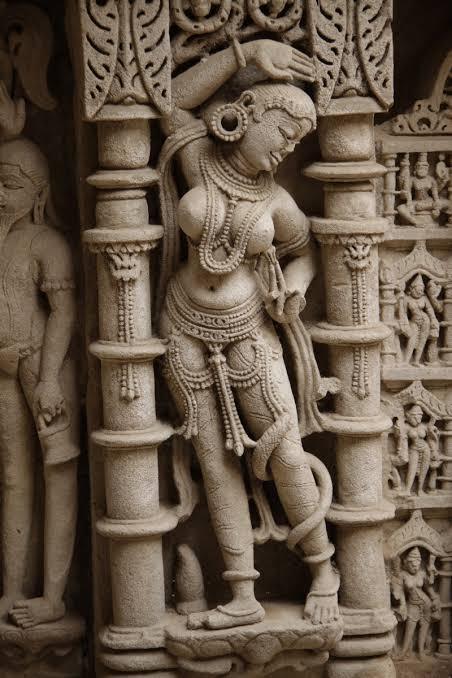
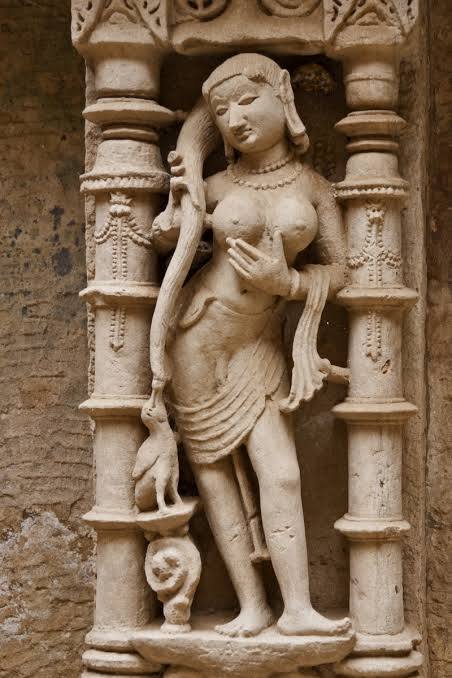
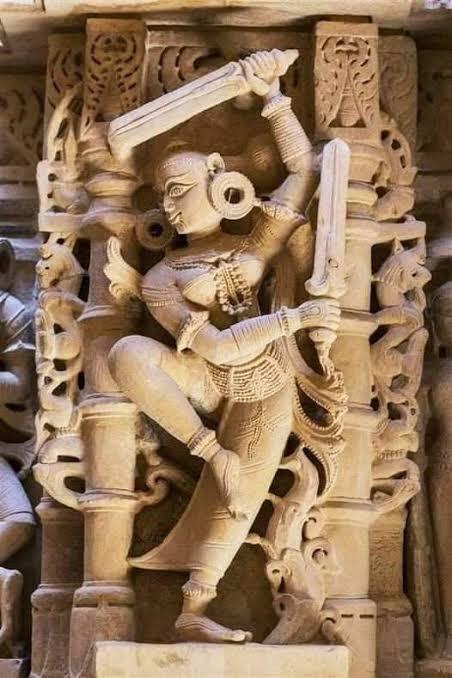

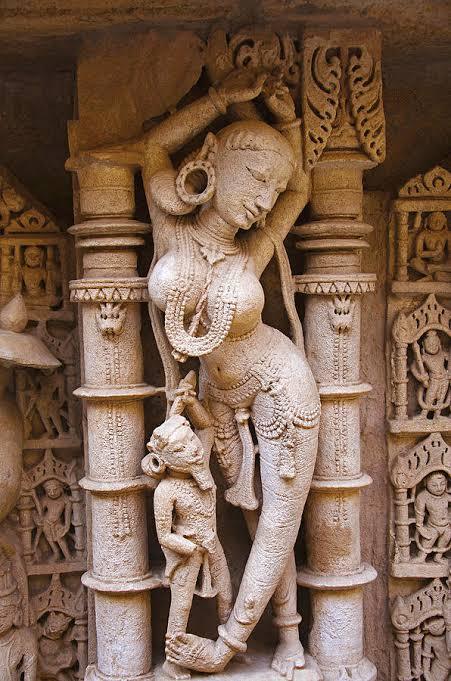




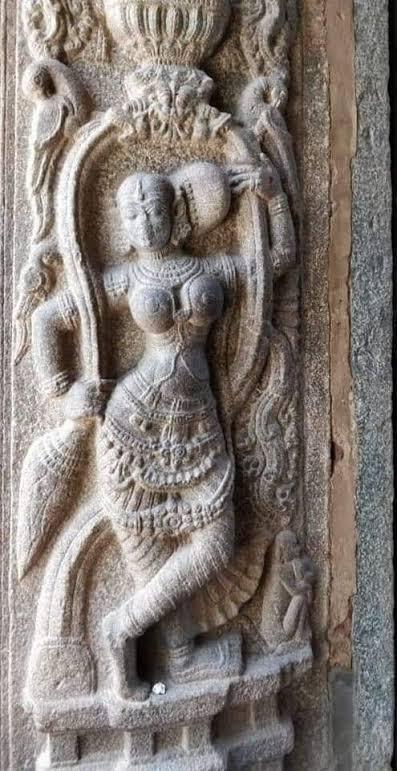
Women in Sculptures | various Hindu and Jain Temples.
#women#esther shrieks*#hindublr#hinduism#sculptures#hindu temples#bharat#jain temples#indian history#women in sculptures#art#hindutva
338 notes
·
View notes
Text

The decorated torana archway of Mukteshwar Temple, Odisha, India, 10th century. The temple dates back to 950–975 CE and is dedicated to Shiva. The stylistic development the Mukteswara marks the culmination of all earlier developments, and initiates a period of experiment which continues for an entire century, as seen in such temples as the Rajarani Temple and Lingaraj temple, both located in Bhubaneswar.
#india#indian history#indian architecture#indian art#ancient india#medieval india#medieval art#medieval history#middle ages#medieval architecture#hindu#hinduism
12 notes
·
View notes
Text

Portrait of Ghazi-ud-Din Haider, 1st King of Oudh (c. 1769-1827)
Artist: Robert Home (British, 1752–1834)
Date: n.d.
Medium: Oil on canvas
Collection: Private collection
Ghazi-ud-Din Haidar Shah
Ghazi-ud-Din Haidar Shah (c. 1769 – 19 October 1827) was the last nawab wazir of Oudh from 11 July 1814 to 19 October 1818, and first King of Oudh (Oudh State) from 19 October 1818 to 19 October 1827.[
He was the third son of Nawab Saadat Ali Khan and Mushir Zadi was his mother. He became Nawab Wazir of Oudh on 11 July 1814 after the death of his father.
In 1816, as a consequence of the Nepal War (in which Ghazi-ud-Din loaned the British 1 Crore Rupees), the East India Company made some territorial readjustments in order to liquidate the loan. They ceded to him the districts of Nawabgunge & Khyreegunge (both taken from Oudh in 1801), along with the Terae lands taken from Nepal, and took Handea (or Kewae).
In 1818, under the influence of the Marquess of Hastings, the British Governor of the Presidency of Fort William (Bengal), he declared himself as the independent Padshah-i-Awadh (King of Oudh). Lord Hastings believed that if Ghazi-ud-din, were made king, he would be a useful counterpoise to the Emperor of Delhi. He accordingly induced him to coin money in his own name, and to assume the title of Shah (King). The title never took much root out of Lucknow, and though Ghazi-ud-din and his four successors were all titular kings, their rule is far more commonly spoken of by the country folk as the "Nawabi" than as "Shahi".
He died in the Farhat Bakhsh palace in Lucknow in 1827. He was succeeded by his son Nasir-ud-Din Haider after his death.
#portrait#painting#oil on canvas#king of oudh#three quarter length#costume#seated#wooden chair#royal robes#royal crown#north india#hindu history#hindu king#oudh state#nawab wazir#artwork#fine art#british culture#british art#robert home#british painter#european art
13 notes
·
View notes
Text
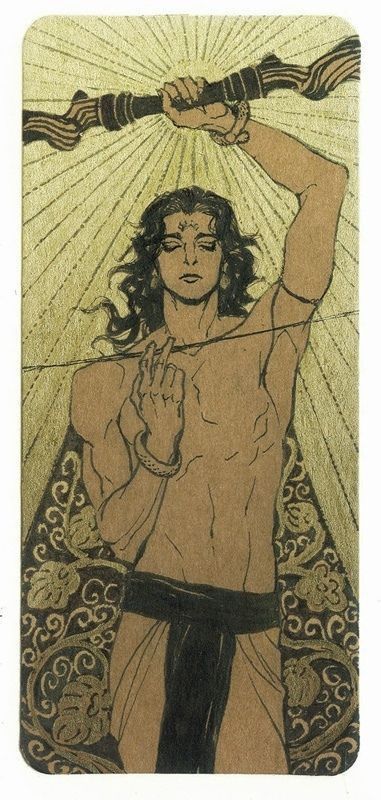
Karna
#desiblr#hindublr#hinduism#hindu art#hindu mythology#indian#krishna#art#mahabhart#karna#sun#mahabharata#history
84 notes
·
View notes
Text
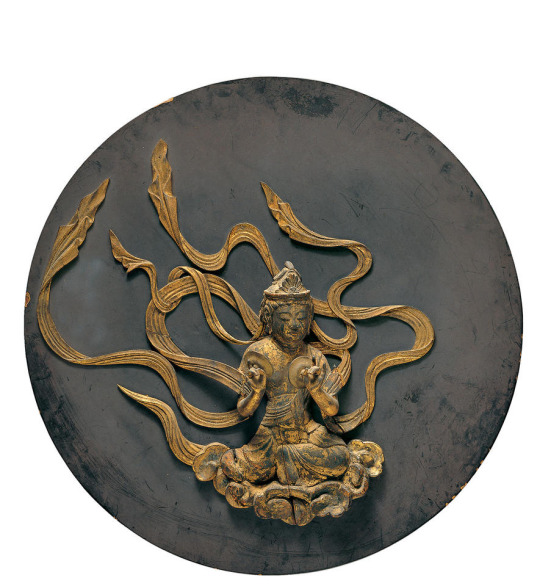

Flying Apsaras
Japan
Late 11th to early 12th century
#japanese art#japanese history#antiquities#asian art#japanese crafts#Asian crafts#art history#aesthetictumblr#tumblraesthetic#tumblrpic#tumblrpictures#religious art#buddhism#hindu mythology#hinduism#tumblr art#aesthetic#beauty
52 notes
·
View notes
Text


Temple of the Sun - Gujarat - India
Woven into the rich tapestry of Indian heritage, the ancient Sun Temple in Gujarat (Modhera), is a Hindu temple that is older than the Konark Sun Temple in Orissa and stands as a testament to astronomical science and artistic mastery. Dedicated to the solar deity Surya, the temple functions as an ancient observatory, strategically capturing the Sun's rays twice a year during the solar equinoxes and, on the summer solstice day, embodying cosmic knowledge and wisdom. As per the Vedas, India's ancient sacred texts, the sun is seen as the soul of the universe and the source of energy sustaining all life on Earth.
Constructed during the rule of Bhima I of the Chaulukya dynasty, it was built between 1026-27 CE on the banks of the river Pushpavati. The 1000-year-old temple encapsulates ancient India's harmonious coexistence of intricate sculptures, exquisite artisanship, astronomical science, celestial alignment, and deep-rooted spirituality.
source
#sun temple#sun temple gujarat#sun temple modhera#india#history#architecture#astronomy#art#sun#equinoxes#vedas#hindu vedas#soul#cosmology#temple#sculpture#artists#artisanship#celestial alignment#spirituality#light
14 notes
·
View notes
Text
Sattais Katcheri
Courtyard of the 27 Pillars, Fort Amber, Rajasthan, India

Explore the majestic Fort Amber in Jaipur, India! This impressive monument, visible in today's image, is located just 11 kilometres from the city of Jaipur and transports you to an era of kings and palaces. Built in 1592, this fort sublimely fuses Hindu, Rajput and Mughal architectural styles, using yellow and pink sandstone, along with white marble. With its four levels, each with its own courtyard, this fortress dazzles both with its beauty and its rich history.
#Sattais Katcheri#Courtyard of the 27 Pillars#Fort Amber Rajasthan India#Built in 1592#this fort sublimely fuses Hindu#With its four levels each with its own courtyard#beauty and its rich history#artists photographie#art#original art#original photographer#photographer#art style#black and white photography#art colors#colors nature#natural interior photography#color photography#art photography#nature photos#nature photography#vintage photography#de tot#fotos art#xpuigc#xpuigc bloc
10 notes
·
View notes
Text
I want to make an ilustration of Ratri, the Hindu goddess of the night, but I don't know anything about this subject myself, and I want it to be as authentic as possible, their are aparently no primary source depictions of her. can anyone give me some advice for how i can make it more acurate?
most basicaly, id like to know what all these outfits and symbolism mean and what would be most fitting...







...but litteraly anything would be a great help
please reblog, i don't have enough followers to reach the intended audience
#you can tell i dont know what im doing because these are all just the wikipedia images for “indian goddess”#please i desprately need help with this i am not qualified#art history#hindublr#hindu mythology#art help#art#hinduism#world culture
23 notes
·
View notes
Text




From: Transactions - The Royal Society of Edinburgh. Edinburgh: Royal Society of Edinburgh, vol. 9. 1823.
Q41 .E2 v. 9
#spectrum#science#illustration#hand colored#orkney#hailstorm#maps#fata morgana#mirage#greenland#india#buddhist#hindu#art#history#libraryofva#specialcollections#rarebooks#19thcentury
19 notes
·
View notes
Text

THE MAHABHARATA - Part 1 👑
This will be Part 1 of 5/6 I think. MUCH more to come, stay tuned! Any advice, critiques and comments are much appreciated!
#illustration#art#artwork#digital art#mythology#character art#character design#mahabharat#hindu mythology#hindublr#desi tag#desi tumblr#bhishma#hinduism#ancient history#ancient india#myth art#myths#my artwork#my art#krishnablr
58 notes
·
View notes
Text

Mahishasura Mardini Panel from Rani ki Vav step well/temple, Patan(Gujarat)
Dated: ~11th century CE
#esther shrieks*#hindublr#hinduism#women in sculptures#sculptures#art#bharat#indian history#durga puja#Durga ma#hindu temples#india#desiblr#mahishasurmardini
74 notes
·
View notes
Text

Kachwaha Rajput ruler of Jaipur, Ram Singh II (r. 1835-1880), hunting a tiger, Kotah, c 1830-1840. Cleveland Museum of Art.
#india#indian art#indian history#indian culture#indian painting#kachhawa#jaipur#19th century#tiger#maharaja#hindu#hinduism
14 notes
·
View notes
